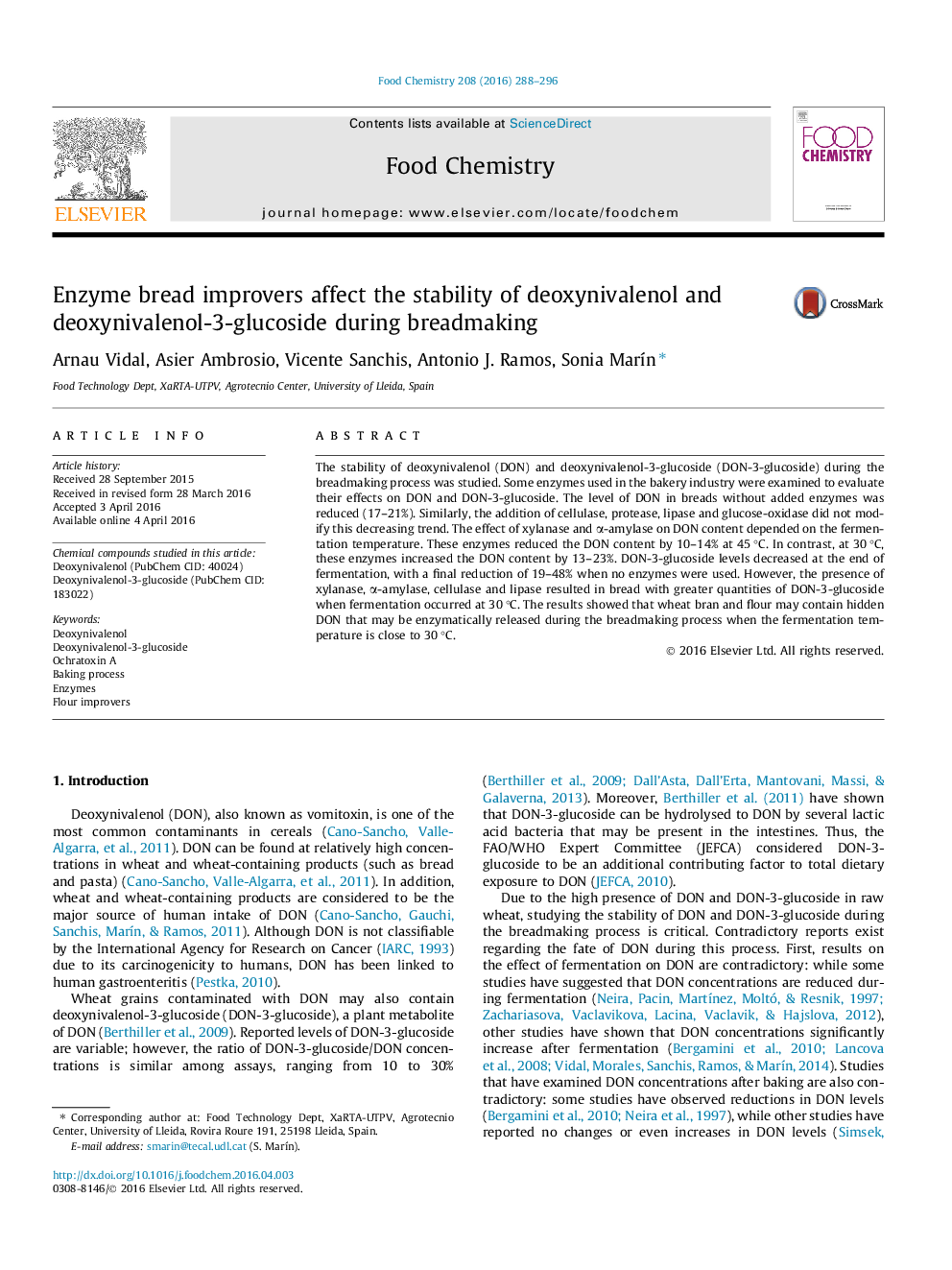| Article ID | Journal | Published Year | Pages | File Type |
|---|---|---|---|---|
| 1183950 | Food Chemistry | 2016 | 9 Pages |
•DON is reduced during bread fermentation without enzymes.•Some tested enzymes caused a DON increase during bread fermentation.•Xylanase presence resulted in a high increase of DON after baking step.•DON-3-glucoside was reduced at the end of bread making process without enzymes.•DON-3-glucoside stability is affected by some enzymes during bread making process.
The stability of deoxynivalenol (DON) and deoxynivalenol-3-glucoside (DON-3-glucoside) during the breadmaking process was studied. Some enzymes used in the bakery industry were examined to evaluate their effects on DON and DON-3-glucoside. The level of DON in breads without added enzymes was reduced (17–21%). Similarly, the addition of cellulase, protease, lipase and glucose-oxidase did not modify this decreasing trend. The effect of xylanase and α-amylase on DON content depended on the fermentation temperature. These enzymes reduced the DON content by 10–14% at 45 °C. In contrast, at 30 °C, these enzymes increased the DON content by 13–23%. DON-3-glucoside levels decreased at the end of fermentation, with a final reduction of 19–48% when no enzymes were used. However, the presence of xylanase, α-amylase, cellulase and lipase resulted in bread with greater quantities of DON-3-glucoside when fermentation occurred at 30 °C. The results showed that wheat bran and flour may contain hidden DON that may be enzymatically released during the breadmaking process when the fermentation temperature is close to 30 °C.
